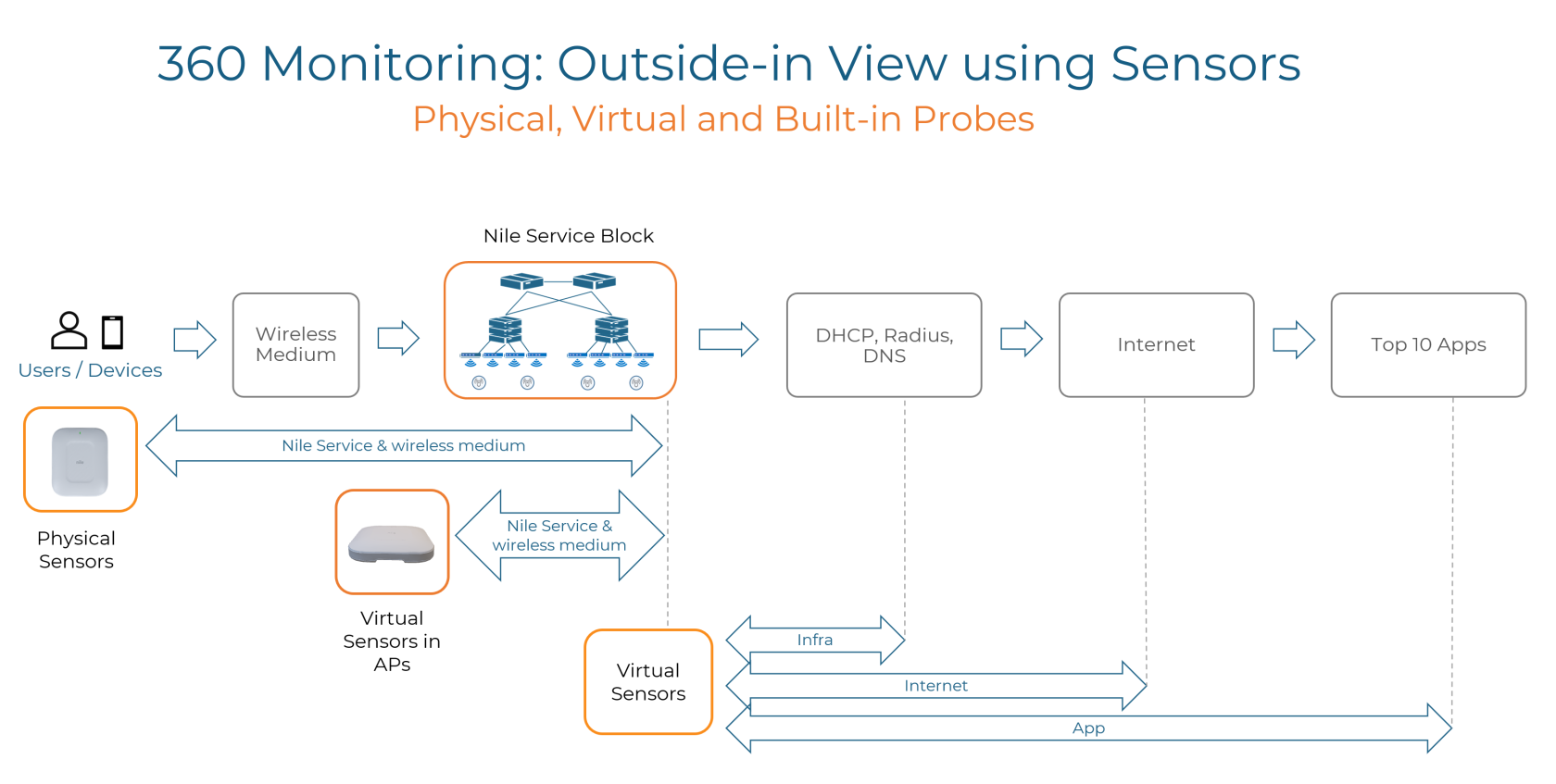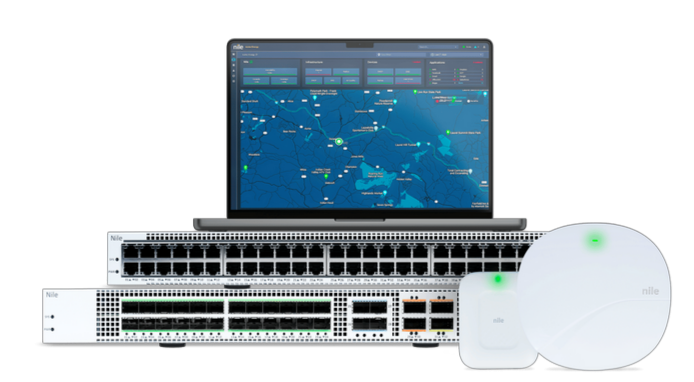What is the Nile Service?
What is the Nile service?
Connectivity should be secured and delivered as simply as utilities like electricity. This is our foundational belief, and underpins everything we create at Nile.
Nile provides wired and wireless connectivity as a service. In this document we will introduce the architecture and functions of the Nile Service, concluding with how it is deployed in a modern enterprise network.
A typical network consists of user and devices connecting via wired or wireless at the access layer. Upstream to the access is the core router and/or firewall which connects to the Internet. Nile focuses on providing Network as a Service for all wired and wireless users and devices.
Nile is not an MSP. We provide connectivity infrastructure in the same way Amazon, Google and Microsoft provide cloud compute. You configure the system to deliver services required, and Nile ensures the underlying infrastructure provides the necessary capacity and reliability.
The Nile Service is delivered by combining modern cloud architecture with fully integrated hardware. Nile switching, APs and sensors have all been developed in-house to achieve our goal of bringing an Apple-like experience to the enterprise.
There are a number of notable innovations that support the Nile Service;
- 'Outside In' approach to active service monitoring
- Redundancy By Default
- Distribution Switches are fully redundant
- Salt & Pepper Wi-Fi deployment ensures continuous access.
- Layer 3 segments replace Layer 2 vLAN/VxLAN
- Campus Zero Trust
let's explore
The 'Outside-In' Approach
Our goal is to eliminate complexity and provide a simple, scalable, and secure network that doesn’t require manual configuration by humans. To ensure the service is always on, we have taken an outside-in approach using physical and virtual sensors that are deployed across the Nile network (including AP’s and switches).
We call this the "outside-in approach" because of its simplicity and the ability to easily verify the Nile sensor data. These sensors monitor the Nile network itself, as well as the DHCP, RADIUS, Internet, DNS, and applications, to identify any issues that can cause end-to-end service interruption.
The Nile network is guaranteed to be always-on and backed financially if SLAs are not met.
Nile SLAs
Following are the SLAs Nile commits to:
Availability:The goal of this SLA is to ensure Nile is available for end users/devices. Our WiFi sensors probe the NSB every minute to ensure it is available. If the probes fail, Nile is in violation for that minute.
Coverage:The goal of this SLA is to confirm every sensor reports a five bars (-67dbm signal or better), every minute. If a single sensor does not receive this signal level, Nile is in violation for that minute. Capacity: The goal of this SLA is to verify that the committed number of Nile APs are functioning across a floor. If the committed number is not met, Nile is in violation for that minute.
Nile commits to SLAs per building, monthly . The SLA is calculated as a percentage of the time Nile meets the SLA threshold. Nile calculates all of the violation minutes reported by all sensors in a building to measure the percentage of time that Nile meets SLA commitments. Unique to the industry, if we fall short on our commitment we provide financial credits back to you.
Our wall pluggable, WiFi physical sensors, and each AP’s 3rd radio sensor are monitoring the Nile service every minute to measure availability, coverage, and capacity of the network. If an issue with Nile disrupts service, this will be reflected in the Nile tile,directly affecting our committed SLA. We built redundancy into every aspect of the Nile Service Block (APs and switches), therefore as an admin, you don't have to worry if an AP or a link is down, but rather if service is impacted. Service availability is truly reflected by these metrics that are continuously running.
Core: Core is basically what Nile offers, Secure Wireless and Wired connectivity as a service. Context: Context is the infrastructure that supports the Nile Service, these include the Internet, DHCP, DNS , Radius, device and applications
Nile Service Architecture
Overview

Nile Cloud Platform
Providing everything you need to order, deploy and manage Nile Services, the intuitive Nile Cloud Platform can be used in the native web ui or via API.
Nile Service Block Hardware
NSB hardware, deployed throughout your sites, serves as the common access layer for both wired and wireless users, along with devices such as surveillance cameras and printers. The physical components of NSB include WiFi 6E APs, Distribution and Access Switches.
-
Switches
-
Distribution Switches
-
24x10/25 Gbps ports for servers and access switches
- 1/10/40 Gbps ports for upstream routers
-
-
Access switches
- 48 multi-gig (100M to 5Gbps) ports for APs, desktops, printers
- 4x10/25Gbps, and unlimited number of switches in a ring
- All ports are PoE / PoE+ capable
-
-
Wi-Fi Access Points
-
Indoor and Industrial Wi-Fi 6e APs
- 4 Radios + 1 BT
- 3 Radios serving clients: 2.4Ghz: 4x4:4; 5Ghz:4x4:4; 6Ghz:4x4:4
- 1 Tri band radio for WIPS/WIDS, RF Monitoring & virtual sensor
- 5Gbps Uplink
-
-
Sensors to actively monitor user experience SLAs.
There are no local interfaces to NSB hardware. The Nile Cloud Platform manages all aspects - from ordering and provisioning to operation and monitoring.
NILE DASHBOARD IMAGE




